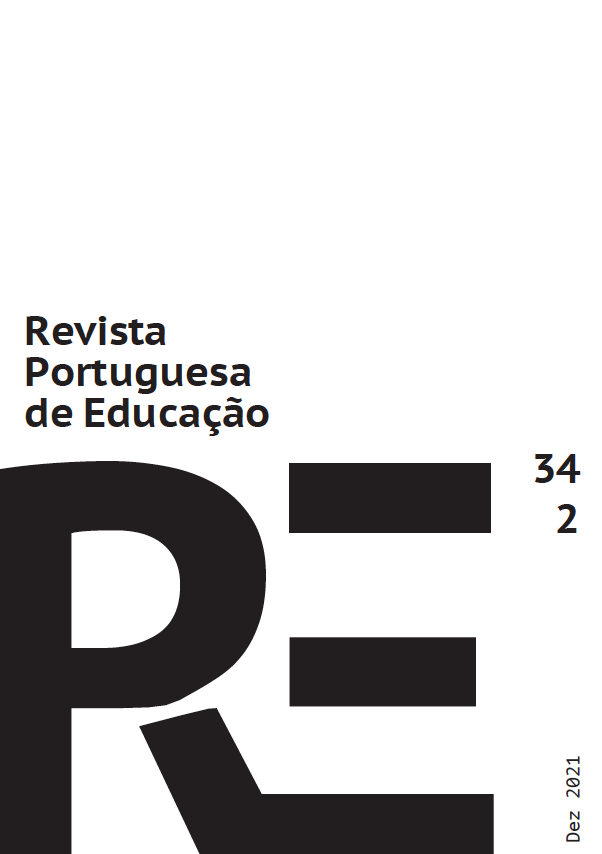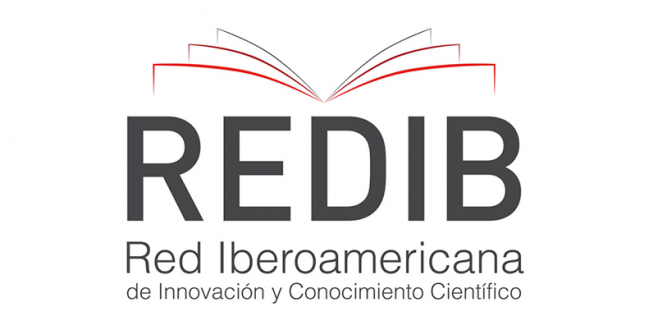The coexistence between online and face-to-face learning in the students' training process: An action-research study on the operationalization of the Flipped Classroom in Portuguese secondary education
DOI:
https://doi.org/10.21814/rpe.21345Keywords:
Projeto de Autonomia e Flexibilidade Curricular; Aprendizagem híbrida; Sala de Aula Invertida.Abstract
The “Projeto de Autonomia e Flexibilidade Curricular” (PAFC) challenges the work dynamics of schools, through regulations that advocate innovative practices promoting differentiated learning and transversal skills. Blended learning is identified as the key to the renewal of school practices, as it enables more dynamic and personalized learning. This text evaluates a blended learning educational proposal the “flipped classroom”, designed to operationalize the PAFC principles. An action-research cycle, developed in a secondary school class, allowed to collect quantitative and qualitative data to evaluate this operationalization and to understand the impact of the proposal on school results and students' perceptions. The results analysis highlights in the proposal the innovation, the student’s engagement, and the complementarity between the online and face-to-face classes, which provided an integrated learning experience supported by the teacher. Classroom interactions allowed students to extend the contents studied autonomously and to develop cognitive dimensions of a higher order. However, the knowledge construction process did not highlight the social skills valued in group dynamics and collaborative learning advocated in the PAFC.
Downloads
References
Bergmann, J., & Sams, A. (2012). Flip your Classroom: Reach Every Student in Every Class Every Day. International Society for Technology in Education. International Society for Technology in Education World.
Boelens, R., De Wever, B. & Voet, M. (2017). Four key challenges to the design of blended learning: A systematic literature review. Educational Review Research, 22, 1-18. http://doi.org/10.1016/j.edurev.2017.06.001
Bishop, J. L. & Verleger, M. A. (2013). The Flipped classroom: A Survey of the research. Proceedings of the 120th ASEE National Conference, 30, 1-18.
Coutinho, C. P., Sousa, A., Dias, A., Bessa, F., Ferreira, M. J. R. C. & Vieira, S. R. (2009). Investigação-acção: Metodologia preferencial nas práticas educativas. Psicologia, Educação e Cultura, 13(2), 355-379.
DeLozier, S. J. & Rhodes, M. G. (2017). Flipped classrooms: A review of key ideas and recommendations for practice. Educational Psychology Review, 29(1), 141-151. https://doi.org/10.1007/s10648-015-9356-9
Elliott, J. (1991). Action research for educational change. Open University Press.
Fisher, J., Bushko, K. & White, J. (2017). Blended Beyond Borders: A scan of blended learning obstacles and opportunities in Brazil, Malaysia & South Africa. Christensen Institute. https://www.christenseninstitute.org/wpcontent/uploads/2017/11/BlendedBeyondBorders.pdf
Flipped Learning Network (2014). The four pillars of F-L-I-P. South Bend, Flipped Learning. http://www.flippedlearning.org/domain/46
Freire, P. (2006). Pedagogia da autonomia. Paz e Terra.
Gross, D., Pietri, E. S., Anderson, G., Moyano-Camihort, K. & Graham, M. J. (2015). Increased preclass preparation underlies student outcome improvement in the flipped classroom. CBE-Life Sciences Education, 14(4), 1–8. https://doi.org/10.1187/cbe.15-02-0040.
Horn, M. B. & Staker, H. (2015). Blended: Using Disruptive Innovation to Improve Schools. Jossey-Bass.
Kemmis, S. (1993). La formación del profesor y la creación de comunidades críticas de profesores. Investigación en la Escuela, 19, 15-38.
Kemmis, S. (2007). Action research. In M. Hammersley (Ed.), Educational Research and Evidence-based Practice (pp. 167-180). Sage Publications.
Kirschner, P. A., Sweller, J. & Clark, R. E. (2006). Why minimal guidance during instruction does not work. Educational Psychologist, 41(2), 75–86. https://doi.org/10. 1207/s15326985ep4102_1
Krathwohl, D. R. (2002). A Revision of Bloom’s Taxonomy: An Overview. Theory Into Practice, 41(4), 212–218. https://www.tandfonline.com/doi/abs/10.1207/s15430421tip4104_2
Lape, N. K., Levy, R., Yong, D. H., Haushalter, K. A., Eddy, R. & Hankel, N. (2014). Probing the inverted classroom: A controlled study of teaching and learning outcomes in undergraduate engineering and mathematics. ASEE Annual Conference and Exposition, Conference Proceedings, USA, 121, 9475. https://www.asee.org/public/conferences/32/papers/9475/download.
Lo, C. K. & Hew, K. F. (2017). A critical review of flipped classroom challenges in K-12 education: Possible solutions and recommendations for future research. Research and Practice in Technology Enhanced Learning, 12(4), 1–22. https://doi.org/10.1186/s41039-016-0044-2
Mayer, R. (2001). Multimedia Learning. Cambridge University Press.
McLaughlin, J. E., Griffin, L. M., Esserman, D. A., Davidson, C. A., Glatt, D. M., Roth, M. T., Gharkholonarehe, N. & Mumper, R. J. (2013). Pharmacy student engagement, performance, and perception in a flipped satellite classroom. American Journal of Pharmaceutical Education, 77(9), 1–8. https://doi.org/10.5688/ajpe779196
Monteiro A., Moreira, J. & Lencastre, J. (2015). Blended learning na sociedade digital. Wh!tebooks.
Morán, J. (2015). Mudando a educação com metodologias ativas. In A. C. Souza & O. Morales (Orgs.), Coleção Mídias Contemporâneas. Convergências Midiáticas, Educação e Cidadania: aproximações jovens (vol. II), (pp. 15-33). Foca Foto-PROEX/UEPG. http://www2.eca.usp.br/moran/wp-content/uploads/2013/12/mudando_moran.pdf
Morin, E. (2003). Os sete saberes necessários à educação do futuro. Cortez Editora.
Ribeirinha, T. & SILVA, B. (2020). Avaliando a eficácia da componente online da “Sala de Aula Invertida”: um estudo de Investigação-Ação. Revista e-curriculum, Dossiê Temático 2020: "Web Currículo: Educação e humanismo”, 18(2), 568-589. https://doi.org/10.23925/1809-3876.2020v18i2p568-589
Rodrigues, S. V. (2018). Três modos de organizar sequências de aprendizagem interdisciplinares com base nas aprendizagens essenciais. http://www.dge.mec.pt/sites/default/files/boletim/aprendizagens_essenciais_consolidacao-articulacao.pdf
Roldão, M. C. & Almeida, S. (2018). Gestão curricular para a autonomia da escola e dos professores. Ministério da Educação, Direção Geral de Educação. http://www.dge.mec.pt/sites/default/files/Curriculo/AFC/livro_gestao_curricular.pdf.
Silva, B., Pereira, A. & Almeida, L. (2017). Innovation in B-learning: Feelings Experienced by the Students of the master’s in educational technology. In G. İlın, S. İlın, B. Silva, A. J. Osório & J. Lencastre (Eds.), Better e-Learning for Innovation in Education (pp. 79-104). Çukurova University.
Strayer, J. F. (2012). How learning in an inverted classroom influences cooperation, innovation and task orientation. Learning Environment Research, 15, 171–193. https://doi.org/10.1007/s10984-012-9108-4
Sun, J. C. Y., Wu, Y. T. & Lee, W. I. (2017). The effect of the flipped classroom approach to Open Course Ware instruction on students’ self-regulation. British Journal of Educational Technology, 48(3), 713-729. http://dx.doi.org/10.1111/bjet.12444
Topping, K. J. & Ehly, S. W. (1998). Introduction to peer-assisted learning. In K. J. Topping & S. W. Ehly (Eds.), Peer-assisted learning (pp. 1–23). Lawrence Erlbaum Associates.
UNESCO-BIE. (2016). Glossário de terminologia curricular. http://www.ibe.unesco.org/sites/default/files/resources/ibe-glossary-curriculum_por.pdf
Van Alten, D.C.D., Phielix, C., Janssen, J. & Kester L. (2019). Effects of flipping the classroom on learning outcomes and satisfaction: A meta-analysis. Educational Research Review, 28, 1-18. https://doi.org/10.1016/j.edurev.2019.05.003.
Vygotsky, L. S. (1978). Mind in society: The development of higher psychological processes. Harvard University Press.
Wallon, H. (1975). Psicologia e educação da infância. Estampa.
Wang, Y. (2016). Could a mobile-assisted learning system support flipped classrooms for classical Chinese learning? Journal of Computer Assisted Learning, 32(5), 391-415. https://doi.org/10.1111/jcal.12141
WEF (2018). The Future of Jobs Report. Centre for the New Economy and Society. http://abet-trabalho.org.br/wp-content/uploads/2018/12/WEF_Future_of_Jobs_2018.pdf.
LEGISLAÇÃO CONSULTADA
Despacho nº 6478/2017, 26 de julho (2017). Direção Geral da Educação. https://www.dge.mec.pt/sites/default/files/Curriculo/Projeto_Autonomia_e_Flexibilidade/perfil_dos_alunos.pdf.
Despacho n.º 5908/2017, de 5 de julho (2017). Direção Geral da Educação, Diário da República, 2.ª série, n.º 128 de 5 de julho de 2017, pp. 13881-13890. http://dge.mec.pt/sites/default/files/Curriculo/Projeto_Autonomia_e_Flexibilidade/despacho_5908_2017.pdf.
Downloads
Published
How to Cite
Issue
Section
License
Copyright (c) 2021 Portuguese Journal of Education

This work is licensed under a Creative Commons Attribution-ShareAlike 4.0 International License.
1. The authors preserve their authorship and grant the Portuguese Journal of Education the right to the first publication. The work is licensed under Creative Commons Attribution License that allows sharing the work with the acknowledgment of initial authorship and publication in this Journal.
2. The authors have the right to take additional contracts separately, for non-exclusive distribution of the published version of their work (e.g. to deposit in an institutional repository or as a book chapter), acknowledging the initial authorship and publication in this Journal.
3. The authors have the permission and are stimulated to post their work online (e.g. in an institutional repository or on their personal website). They can do this at any phase of the editorial process, as it may generate productive changes, as well as increase impact and article citation (see The Open Citation Project).
The work is licensed under Attribution-ShareAlike 4.0 International (CC BY-SA 4.0)




















